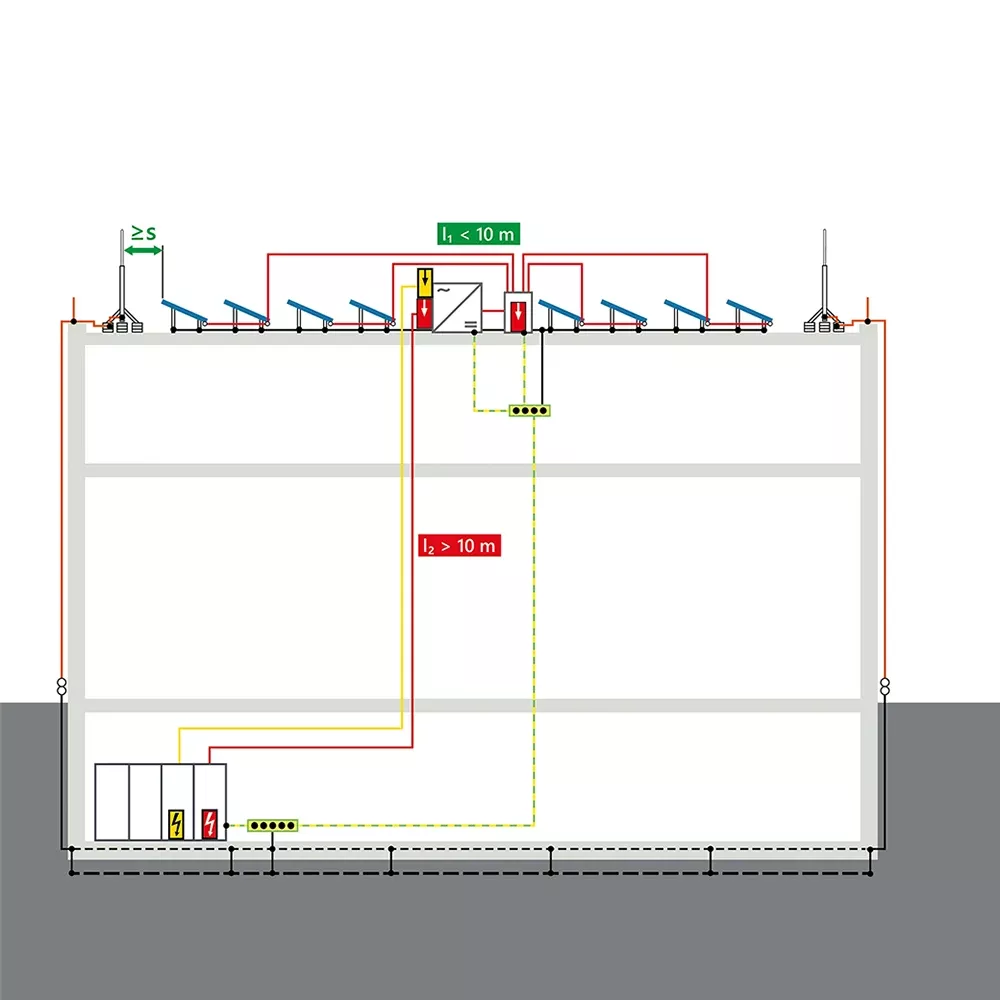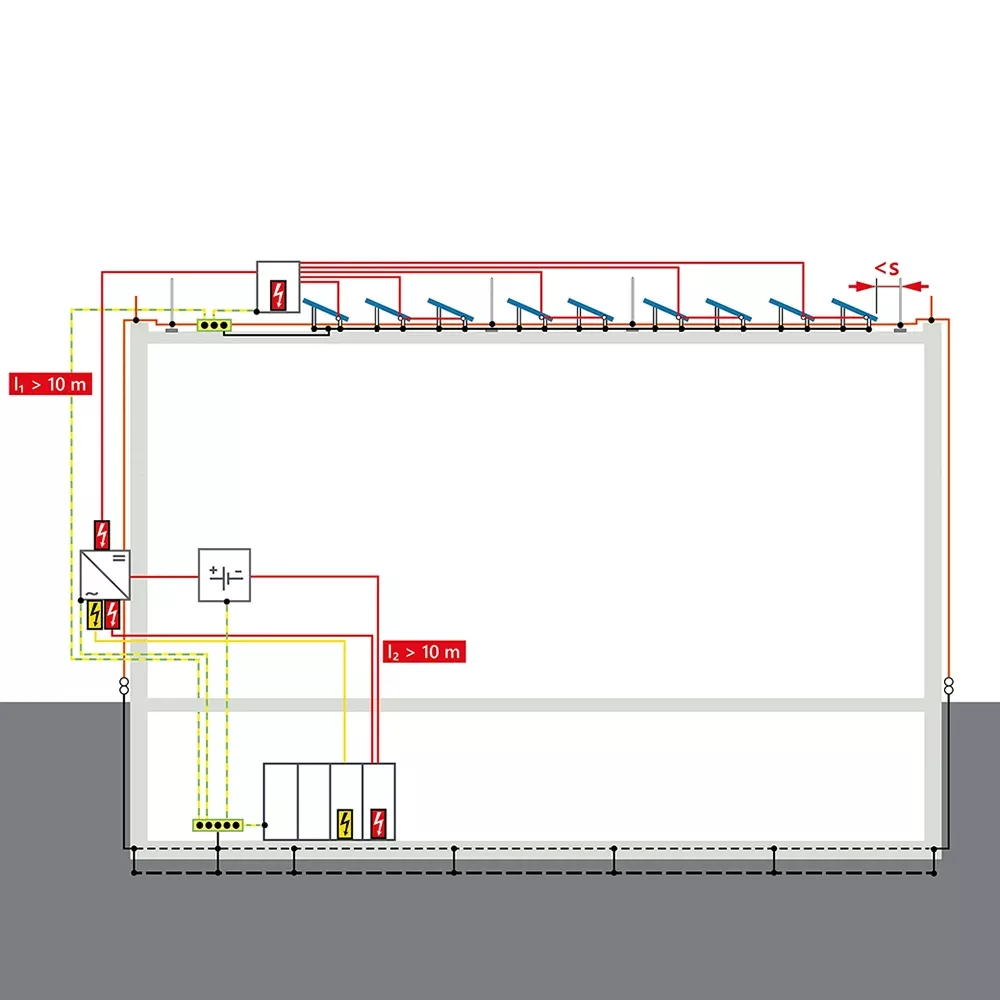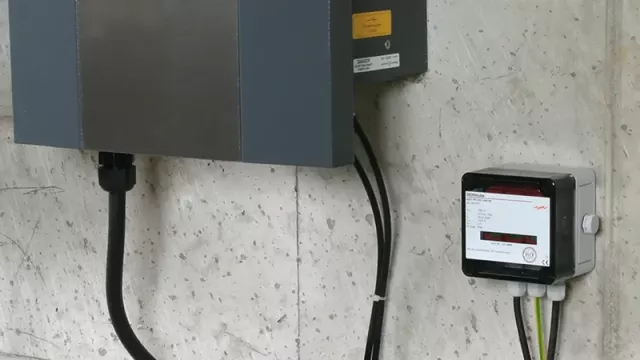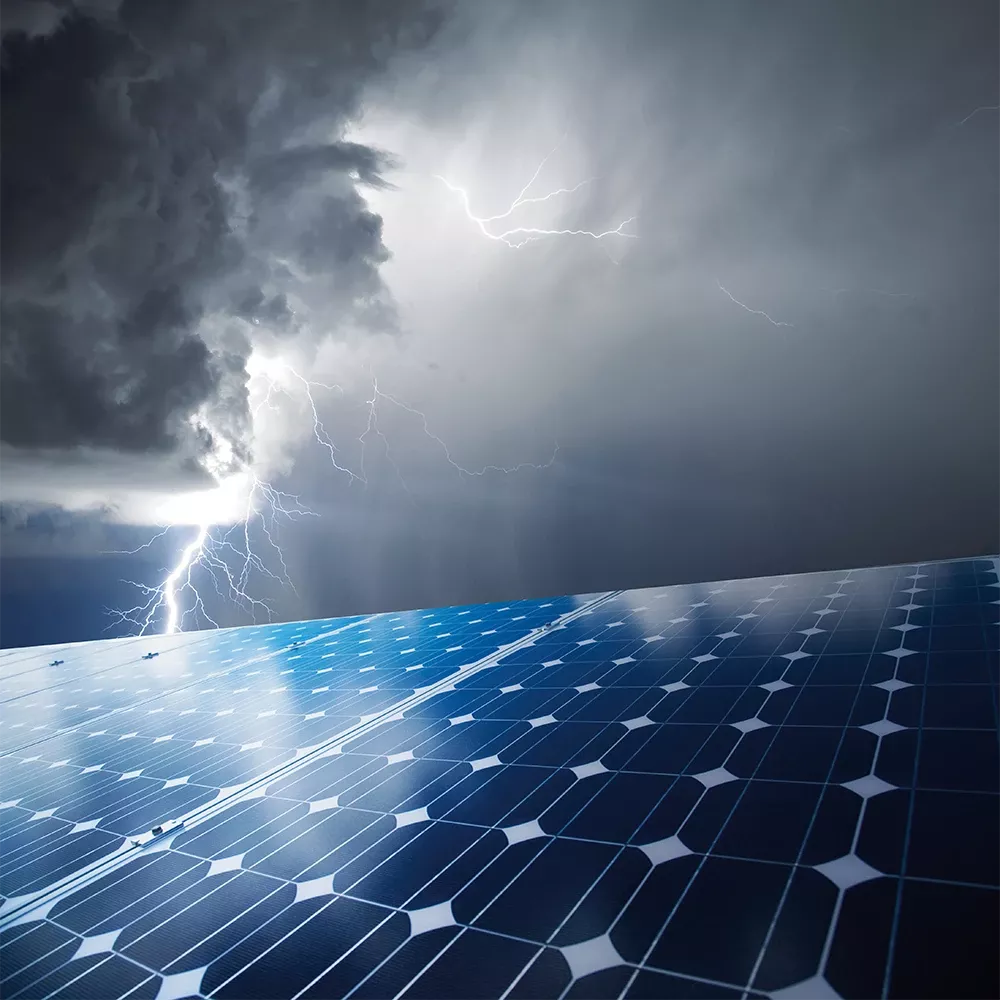Protection for PV systems on buildings
Finally independent – from public energy infrastructure, fossil fuels and political developments. Photovoltaics make it possible, which is why rooftop systems are enjoying growing demand. In residential buildings as well as on industrial and commercial buildings or data centres.
The more energy is generated via PV systems, the more depends on their availability. Any failure can result in high costs and far-reaching complications:
Favourable electricity for your own consumption and income from energy infeed no longer apply
Expensive electricity must be purchased from the grid
Repair costs reduce the profitability of the system
Lightning and surge protection measures are therefore an integral part of the installation of PV systems – and are mandatory in many places in relation to public buildings or parts of critical infrastructure. The requirements for the protection solution also vary depending on the type of building and individual requirements.
We will show you how to protect your independence in the best possible way and support you as an expert partner. With sophisticated, reliable protection solutions. With all-round service that covers you in all areas.

Lightning protection starts with a risk analysis
Professional planning is a prerequisite for safe and reliable operation of a PV system – starting with a risk analysis in accordance with IEC 62305-2, which you can use to determine the protection class for your lightning protection system. This must be tailored to the respective building and include lightning and surge protection.
We look forward to helping you in this matter: entrust our experts with the implementation, or use our practical application DEHNrisk. With the intuitive tool, you can quickly and easily determine the protection class for your system yourself.
Important for your future plans
Ensure good coordination between the trades involved. While PV installers aim to maximise the utilisation of the roof surface, lightning protection installers must take into account the separation distance for the lightning protection system. A lack of coordination can lead to considerable problems. Not only for new buildings, but also for the retrofitting of rooftop systems. This is because PV systems on buildings must not impair existing lightning protection measures.
We support you throughout the entire planning process with our comprehensive DEHN Engineering Services. Completely flexible – in partial services or as a full-service package.
Our services
DEHN Engineering Services
We create the complete lightning protection concept for your project – from risk analysis to budget planning.
DEHNplan
With the BIM-capable software, you can plan standard-compliant earthing systems and external lightning protection systems.
DEHNselect IT
With DEHNselect IT, you can easily find the standard-compliant surge protection for your photovoltaic system.
Important parameters for an effective protection concept
To prevent uncontrolled flashovers to neighbouring metal parts in the event of a strike to the external lightning protection, you must take into account the separation distance "s" between the lightning protection system and the photovoltaic system. This describes the distance that suffices in preventing such flashovers from occurring. In the worst case, such an uncontrolled flashover can set a building on fire. If the separation distance is not maintained, a Type 1 combined arrester, such as the DEHNcombo, is required on the DC side. If the separation distance is maintained, a Type 2 arrester such as the DEHNguard MP YPV may be sufficient.
Lightning and surge protection for photovoltaic systems in residential buildings
Even if there is no external lightning protection, surge protective devices (SPDs) must be provided in accordance with IEC 60364-4-44 and IEC 60364-7-712. The SPDs should be installed as close as possible to the device to be protected, such as the inverter – both on the AC and DC side. Particular attention should also be paid to earthing and equipotential bonding. The mounting system of the PV modules must be included in the functional equipotential bonding and their frames must be earthed in accordance with the manufacturer's specifications. All metal parts that are connected to the cabling of the system should be included in the equipotential bonding. If the inverter housing is made of metal (protection class I), it should also be earthed and connected directly to the surge protection on the earth side.
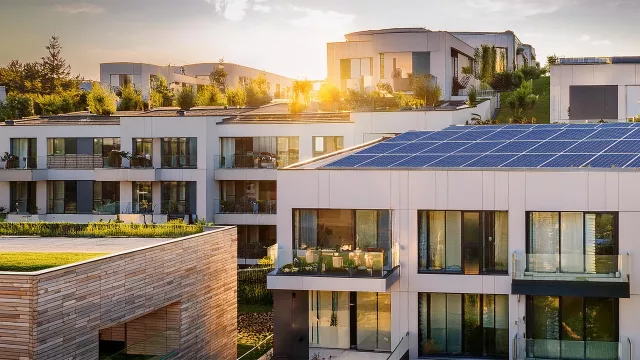
Lightning and surge protection for photovoltaic systems in industrial buildings
In industrial buildings, the requirements for lightning and surge protection for photovoltaic systems are even more demanding due to the larger surfaces and higher electrical loads. The PV modules must be arranged in the protected volume of the isolated air-termination system while maintaining the separation distance "s". Type 2 surge arresters are used on the DC side for special protection of the inverter. The AC side is protected by combined arresters. Both should be installed as close as possible to the inverter.
If the separation distance cannot be maintained, lightning equipotential bonding must be carried out. The metal components, such as the mounting system of the PV system, must be connected to the lightning protection system with lightning-current-carrying capability. When connected to the external lightning protection, lightning currents are conducted into the interior of the building – they therefore pass from lightning protection zone (LPZ) 0 to LPZ 1. Lightning equipotential bonding of the electrical supply and data lines of the PV system is necessary at this transition point. This is achieved by means of a Type 1 combined arrester on the AC, DC and data side. Note: If the cable length between the arrester and the device to be protected is more than 10 m, additional Type 2 surge arresters must be used.
We will be happy to clear these up in person.
Safely standard-compliant
These standards provide specifications and guidelines for the lightning and surge protection of photovoltaic systems:
- IEC 62305 for lightning protection
- IEC TR 63227:2020 contains specific protective measures that must be taken into account when installing lightning and surge protection systems
- IEC 60364-4-44 Section 443, IEC 60364-5-53 Section 534 and IEC 60364-7-712 deal with the installation of surge protection measures – even if there is no external lightning protection system.
